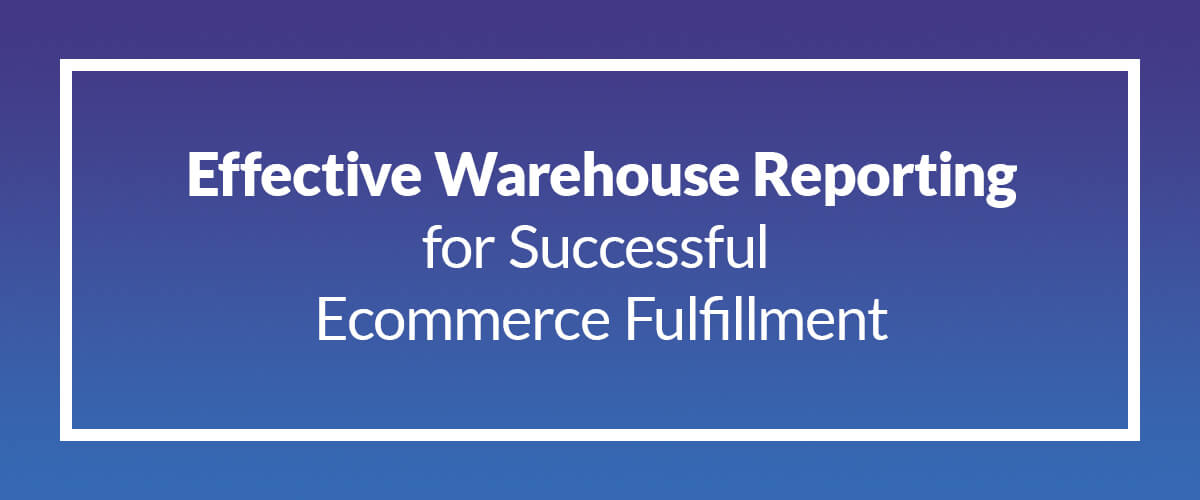The meteoric rise of ecommerce and specifically, the Direct to Consumer (DTC) fulfillment model, is forcing companies to adopt new strategies and restructure traditional methods to compete in a rapidly changing retail landscape.
The good news is that there are intelligent fulfillment systems that generate vast amounts of data that unlock valuable insights into your warehouse operations. Having effective warehouse reporting technology provides the real-time data needed to optimize day-to-day warehouse operations and make stronger, long-term, data-driven decisions.
However, to ensure you’re taking advantage of all of the available data for effective warehouse reporting, it’s important to first build a data strategy. Tracking the right performance data is essential for organizations to stay competitive and innovative amidst constant change. Upfront and careful planning around the collection and organization of your data will pay off in meeting business goals and maximizing efficiencies.
Setting key performance data parameters will help identify the most important areas to track within your fulfillment operations.
In this guide, we’ll be looking at:
- Reporting Pillars of an Effective Warehouse Reporting Program
- How to Use Data to Produce Valuable and Actionable Reports
- Three Quick Takeaways for Effective Warehouse Reporting
Reporting Pillars of an Effective Warehouse Reporting Program
There are three foundational elements of a reporting program:
-
- An accurate and rich data source
- A strong reporting tool
- A robust reporting strategy
Having these in place will provide actionable data to ensure efficient warehouse operations, cost savings and top-tier customer satisfaction.

Setting Reporting Goals
The first step to take in building an effective warehouse reporting strategy among key stakeholders is to set fulfillment operations goals and map data to those goals.
When setting goals, keep the SMART formula in mind: Specific, Measurable, Actionable, Realistic and Timely.
Next, evaluate this information for a solid understanding of the data available:
-
- Scope: Determine what kind of data you have access to and what the level of detail is available (e.g., time stamps, a record of updates, who made a change.)
- Reliability: How accurate is your data and can you trust it to make crucial decisions? (Is it manually entered or calculated by the software?)
- Accessibility: How easy is the data to read, access and manipulate? How often can you access it? Can you access it in real-time?)
Turning Info in to Action
Once date types are determined, think about the reports you want to create. No matter what direction you take, a best practice is to start simple. Only provide the information you need in a way that is easy for employees to consume and understand.
Next, consider the internal audience. Think about who needs specific data to be successful in their role and the types of decisions people need to make based on the reporting data.
As part of your reporting strategy, it’s also important to decide which reporting categories to track. Assess what tactical information you need access to, such as daily job assignments.
Also, determine what recurring reports to track, such as monthly billing reports for a client and also establish which strategic reports to use to evaluate long-term aspects of your warehouse operations, such as the need to add another packing station.
Effective Data Delivery for Effective Warehouse Reporting
Once the groundwork of the strategy is laid, the next step is to set up warehouse reporting parameters.
To gain the insights WMS data provides, there are key elements to creating effective reporting:
Action-Based Reports
-
- A report is not helpful if there isn’t an action to take to improve the outcome
- Avoid reports that don’t add value to fulfillment operations. A WMS generates so much data, it’s important to carefully select the most pertinent to your organization
Proof of Concept
-
- Keep reporting simple and easy
- Collect feedback from key stakeholders on the format
Feedback/Process Improvements
-
- Group reports by internal group or function
- Build a process to update/remove/add reports as business needs evolve
- When data reports become useless or redundant, re-evaluate the reporting strategy
An intelligent WMS provides the ability to measure, monitor, analyze and improve efficiencies across your business for effective warehouse reporting. Today’s competitive landscape, high customer expectations and razor-thin profit margins require systems that keep supply chain operations highly functional and efficient to meet growing demand. This is all critical to DTC ecommerce success.
To learn more about how Logiwa’s warehouse software can help you meet your reporting goals, check out the Quicktake webinar, reach out to a sales team member or request a demo.






